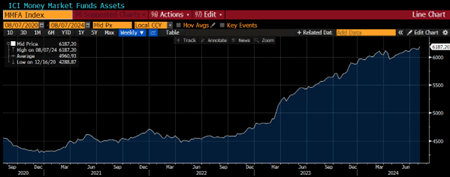Long-term strategic fixed income allocation
- 08.12.24
- Markets & Investing
- Commentary
Market investors have a multitude of reasons for the strategic allocation of their portfolios. This is no surprise as everyone's financial situation is unique, ranging from sources of income to necessities, to uses of discretionary funds. The flexibility offered through individual bonds translates well for tailoring individual financial goals and needs. On a higher level, many investors’ fixed income allocations carry the primary goal of preserving capital or keeping individuals wealthy when they typically have retired from their primary source of income.
Over the last couple of years, bond market yields have elevated to levels not seen in almost 17 years. Unfortunately, the opportunity to benefit from these higher rates of return is not guaranteed to be available in the future. For well over a year, the Treasury rate curve has been inverted. When the economy gets overheated and pricing inflates, the Fed raises Fed Funds to slow things down. Long term rates can decline when investors feel this could cause a slowdown in the economy. An inverted curve naturally attracts investors to short term investments since a higher rate of return is offered on short maturing bonds versus longer maturing bonds. The Investment Company Institute (ICI) reports that money market assets have climbed to a staggering $6.19 trillion.
A recent third-party Harris Poll conducted for the Guardian showed that nearly 3 in 5 respondents felt the U.S. was in a recession. Whether we are officially in one or not may not matter if the majority of Americans are feeling less sure about their financial security or how the current markets will affect their financial position. If the economy is indeed slowing down and employment data is weakening, it is not farfetched to rationalize interest rates will continue to fall. The green line in the graph shows current interest rates and the higher levels associated with short holdings. The red line (for illustrative purposes) depicts how the future yield curve could look if employment and economic data continue to decline. This is the dilemma investors face. It is beneficial to earn 5% to 5.5% in short rates especially for funds kept short for liquidity needs. For funds associated with long term strategic planning, reinvestment risk is elevated. Earning 5.25% for 30 or 60 days may not offset 2% future rates should the economy go where a majority of people think it will. Locking into 4% to 5% rates for longer may provide a more conservative and beneficial investment while reducing reinvestment risk.




